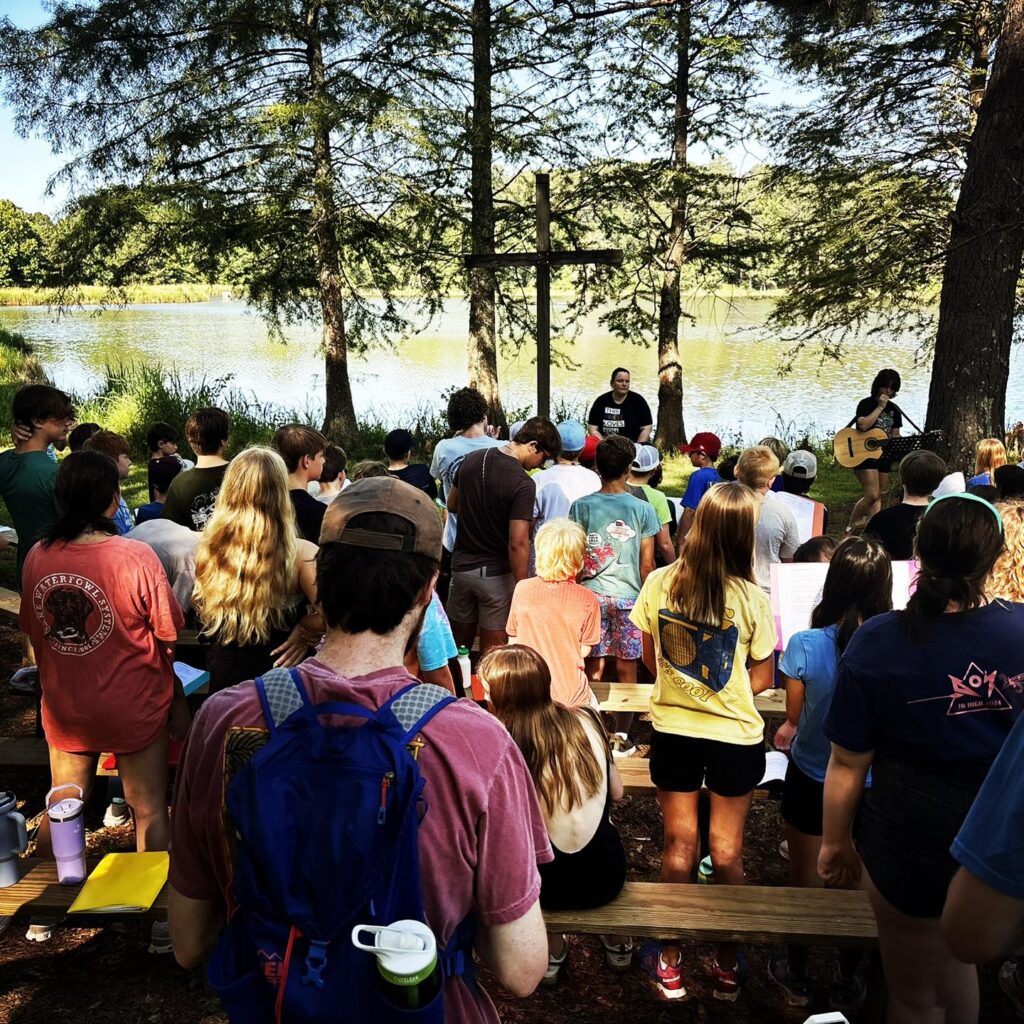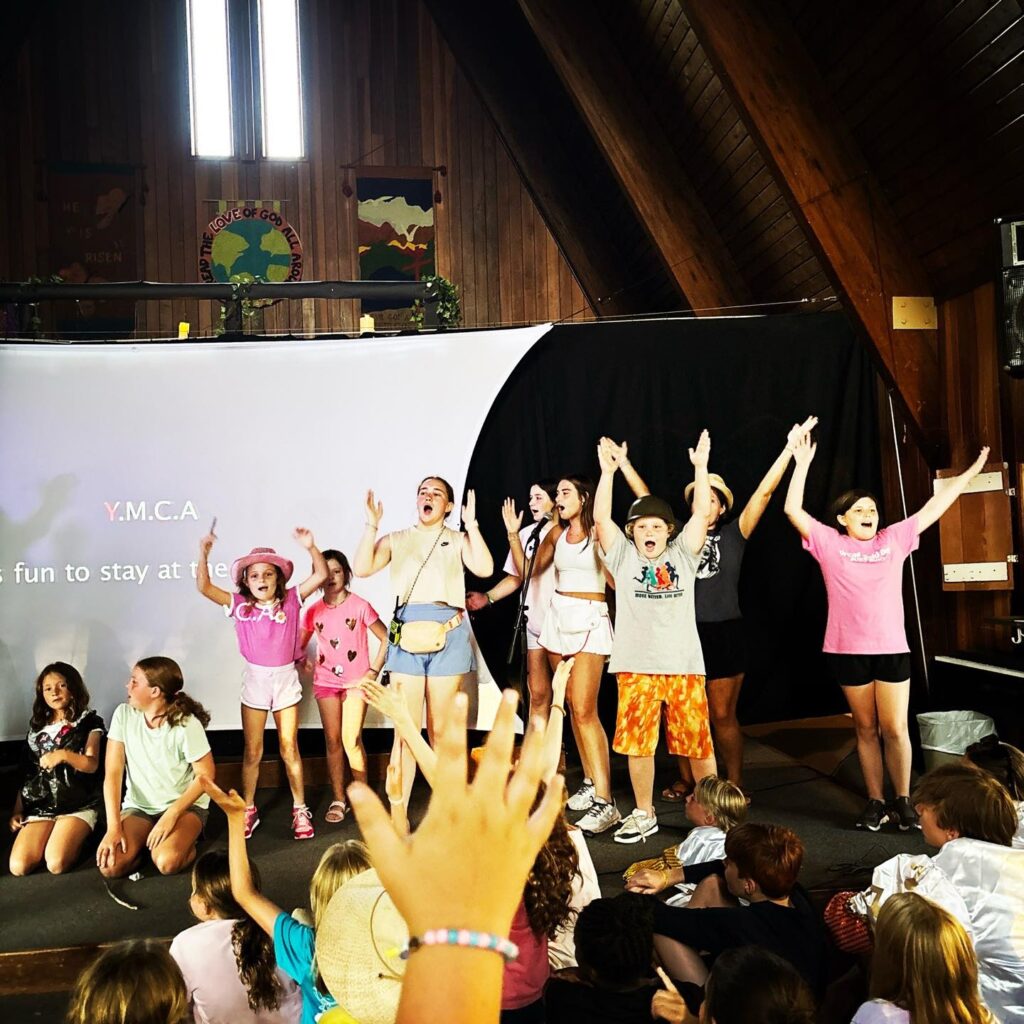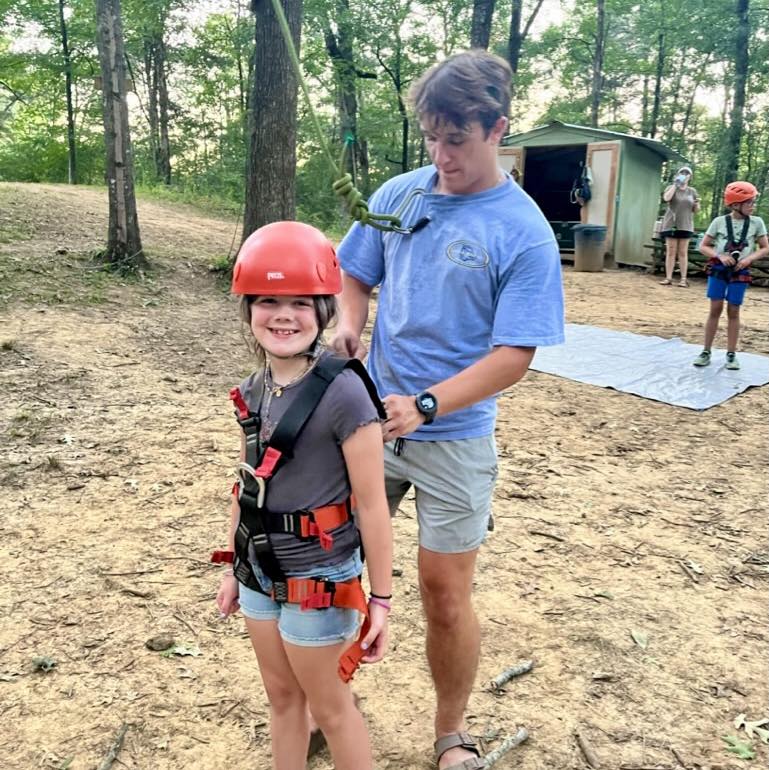Part of what makes Camp Bratton-Green an institution beloved by so many are the things that never change—lunch songs, canteen calls, an outrageous and lanyard-clad permanent staff. The traditions, the people, the familiar sight of that precise shade of green paint (officially “Bratton green”) on the buildings. The smell of tie-dye wafting out of the craft shack.

The fact that so much can stay the same at a place that’s been through all that camp has—particularly a devastating tornado in 1990 and more recently two years of pandemic closure—is a testament to the determination of the people who love it.
Sometimes, counterintuitively, maintaining tradition requires making changes. Unlike the acute challenges of tornados and pandemics, the challenge of evolving summer school schedules has been a gradually growing problem. The length of vacation has dwindled, extracurricular activities have become a fixture, and summer in general has become busier than it once was. As a result, Bratton-Green, like all summer camps, has had to find answers to a difficult question: how do we make time for camp?
In July, one attempt to answer that question was made with a mixed-age session. Commonplace at many camps, it was a new approach at Bratton-Green, which has for many years divided its camps each week by age group.
Stepping up to lead the experiment were the Rev. Annie Elliott and Jace King, both lifelong “camp kids” and, in prior summers, the co-directors of the “elementary” session, which hosts kids in roughly 3rd and 4th grades, as well as the two-day mini-camp known as “primary camp,” for very young children coming to camp for the first time.
Only a few years ago, Bratton-Green offered two special sessions for people with disabilities and two youth sessions for each of three age groups (as well as the smaller primary camp). The shortening of summer vacation finally forced camp to reduce that number—the two special sessions remain, but only four total youth sessions would fit the summer calendar. Three of those, naturally, went to the three age groups. For the fourth, attempts to predict which group would need a second session based on the prior summer’s attendance proved unreliable, and some camps left kids on the waitlist while others left multiple cabins going unused.
The flexibility of a camp that any age camper could attend, it was hoped, would give more kids more chances to attend camp when it worked with their schedules. It’s not only logistics that made the plan appealing, though.
“Instead of betting on a single age group filling up the fourth youth session, we can count on a more full session by opening it to youth of different ages, and every full bed counts,” says Elliott. “Second, some families enjoy the opportunity to send all of their children to camp together, which usually can’t happen at a single-age camp session. Finally, there is immense benefit to youth of different ages interacting with each other. Younger children and teenagers alike have much to learn from being around each other.”
She acknowledges that those benefits don’t come without new challenges, however.
“The different ages each have different abilities, interests, and needs,” she says, “and offering programming that engages all ages is harder than offering programming that engages a single age. In particular, planning all-camp activities like capture the flag requires special attention, so that the older campers can both lead and play and the younger campers can feel included and useful.”
There’s also the concern of younger campers being exposed to more mature language and conversation than they are ready for. Elliott and King addressed those concerns by looping in the teenagers and granting them a quasi-staff status.
“On the first night, we met with them to discuss their privileges and responsibilities,” says Elliott. “In return for serving as good examples and helping out around camp, the teenagers got to stay up later and partake in special activities, like the zip line during rest period or a night swim. The cabins were divided into different ages, which made managing the ages easier. The oldest campers helped camp staff clean up after elaborate and messy activities, gaining an appreciation for the work that goes into making camp fun.”
The theme for the session was Bratton-Green Camp for Witches and Wizards. Campers were divided into six “magical houses” named after important families in camp history (Belote, Cresup, Fontaine, Keeling, Solomon, and Spivey), each representing a different activity area at camp.
The magical houses were an easy way to divide campers into fairly even groups for camp games and competitions, and houses competed each day to earn points. The houses ate dinner together each night and had special house meetings after dinner.
 The pitch for the theme went something like this: According to ancient knowledge, every 100 years, a plague of hate can fall upon magical institutions, like camps for witches and wizards. 2024 being the 100th year of camp in the Episcopal Diocese of Mississippi, campers had to fight to repel the plague of hate. Seminarian and this summer’s camp chaplain, Gabbie Munn, played the head-of-camp-turned-hate-warlock. Over the course of the week, Gabbie fanned the flames of hate, recruited the adults into her army of hate, and pitted the campers against each other in hateful competition. Toward the end, Gabbie began to realize the harm she was doing and apologized. Her staff, however, reminded her that reconciliation takes more than saying sorry, and helped her take actions to repair the harm she had done. The theme was meant to evoke and reinforce the two great commandments of the gospel, to love God and to love each other.
The pitch for the theme went something like this: According to ancient knowledge, every 100 years, a plague of hate can fall upon magical institutions, like camps for witches and wizards. 2024 being the 100th year of camp in the Episcopal Diocese of Mississippi, campers had to fight to repel the plague of hate. Seminarian and this summer’s camp chaplain, Gabbie Munn, played the head-of-camp-turned-hate-warlock. Over the course of the week, Gabbie fanned the flames of hate, recruited the adults into her army of hate, and pitted the campers against each other in hateful competition. Toward the end, Gabbie began to realize the harm she was doing and apologized. Her staff, however, reminded her that reconciliation takes more than saying sorry, and helped her take actions to repair the harm she had done. The theme was meant to evoke and reinforce the two great commandments of the gospel, to love God and to love each other.
During staff training, staff talked about theirs and their campers’ gifts, and what it means to hide our lights under a bushel. This helped staff understand the purpose of the mixed-age session and encouraged all to let their own lights shine bright as they helped the campers to let their own lights shine bright.
As the mixed-age session looks ahead to year two, there are lessons learned from this summer that will lead to adjustments going forward. Elliot and King feel that the experiment was a success—campers seemed to learn their roles and adjust to the format. And from a logistical standpoint, the impact was undeniable. The inaugural mixed-age session was the first camp of 2024 to fill every bed during registration.
